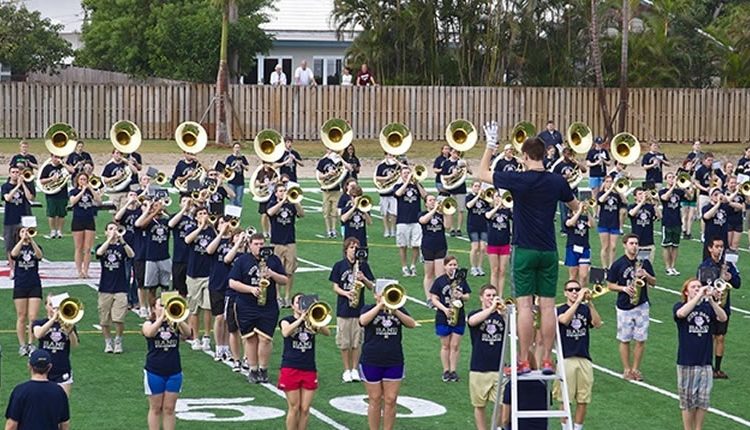Drill Design Preparation
2009 Drill Design
Scott Kurtzweil, Kurtzweil Designs
Before we get into the particulars of the actual design for the 2009 Notre Dame HS Band, let’s take a few minutes to go over the design preparation that I go through with every school program for which I write. For those of you readers that are familiar with the show design clinics from previous years, this current installment will present nothing particularly new but I believe it is important to review none the less.
I. Degree of Demand (Grade Level)
Prior sitting down to design a visual package for a particular ensemble, I like to review video of its previous three years of performances. From these I can gain a wealth of information including performance and design techniques with which the students are already familiar and an over all sense of performance quality both for individual sections and the band as a whole.
Like most band music, a drill design can often be graded based on the demand that it places on the individual performer and the ensemble as a whole. In fact, many designers will grade their designs on the same 1 to 6 scale that is usually associated with band scores to make for an easy correlation. Also, like in choosing music for the band, it is important to purchase or create a drill design that offers the students the opportunity to grow while at the same time accenting your ensembles strengths while drawing attention away from its weaknesses.
Regardless of how years I may have written for a particular program, I always request the director complete a numbers survey for me (see example below). In the survey, the director provides not only his instrumentation but also the average grade by section as well as a movement grade. These tools help me better understand the strengths and weaknesses of each band.
Example Numbers Survey
II. Design Concepts
Designing a show that will resonate with your audience is nearly as important as designing a show to fit your ensemble. If you are writing for a program that traditionally marches a Big Ten style half-time show, the last thing you may want to design is an extensive free-form moment complete with dancing mellophones. Conversely, if your audience includes judges, it is also important to write a show that is going to maximize your potential score in both composition and execution.
III. Dissecting The Musical Score
Prior to plotting that first page in Pyware, I will sit down with the entire program staff and break down the score into phrases . This final pre-design meeting ensures that all of the design team is on the same page with regard to phrasing and also gives me insight into necessary staging throughout the program (This is especially true with regard to the color guard as staging for them is critical based equipment, costume changes, etc.) The final result of this meeting is a phrasing spreadsheet (see below). This spreadsheet lays out not only count structure but also…
Important Instrumentation – Staging important voices in the music book is as equally important as the type of movement you are designing. When staging, keep in mind the size and projection abilities of the instruments you are staging.
Score Texture – The thickness of the voices in the music book has a big impact on the visual presentation of that book. If the voicing is fairly exposed, open up your staging and allow the eye to relax. If the texture is very dense, stack you layers vertically. This will add focus to the visual book but also make for a more homogenous band sound.
Velocity – The speed of the visual development should match the rhythmic and harmonic tempo of the piece you are interpreting.
Color Guard Staging Plans – Working with your guard designer should give you a good idea as to the type of work he/she is planning. Keep in mind the “reach” of the choreography (i.e. – a silk on a 6 ft. pole allows much greater visibility than a body only phrase).



